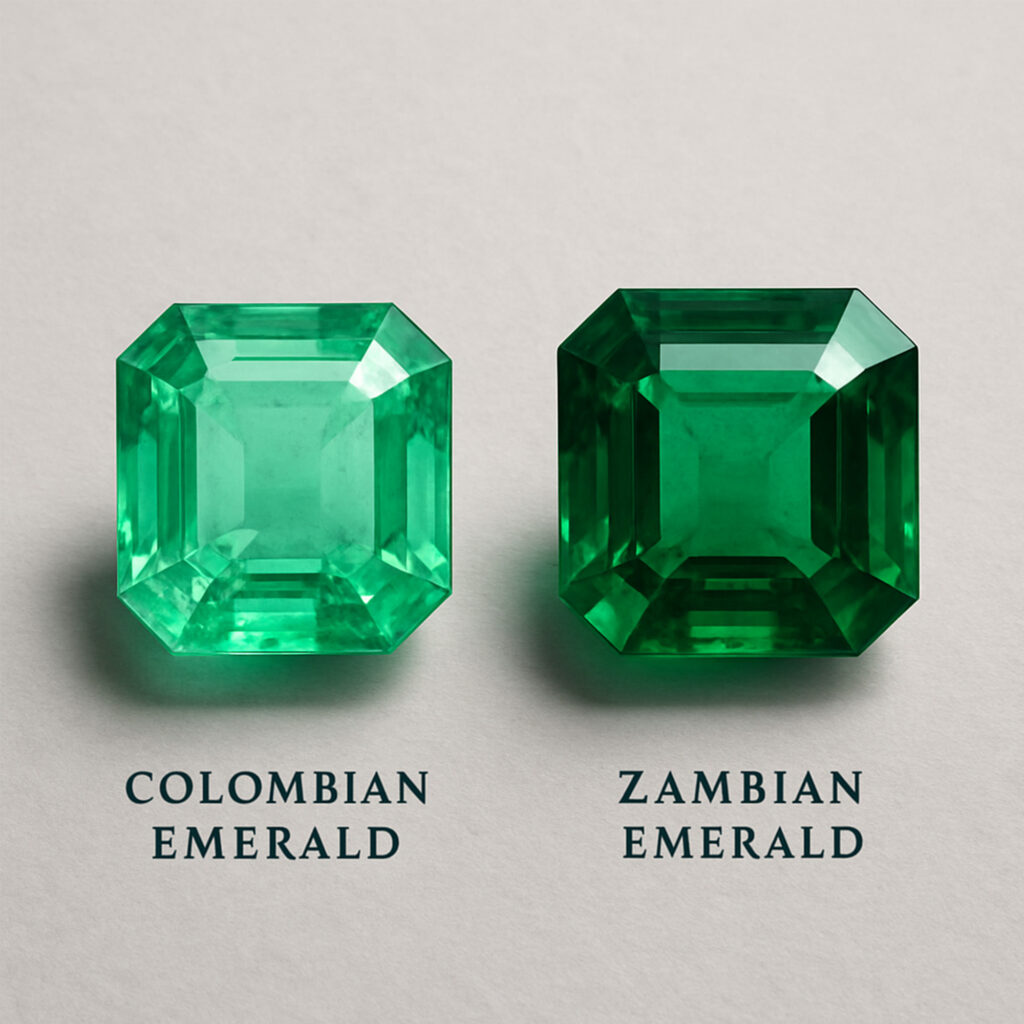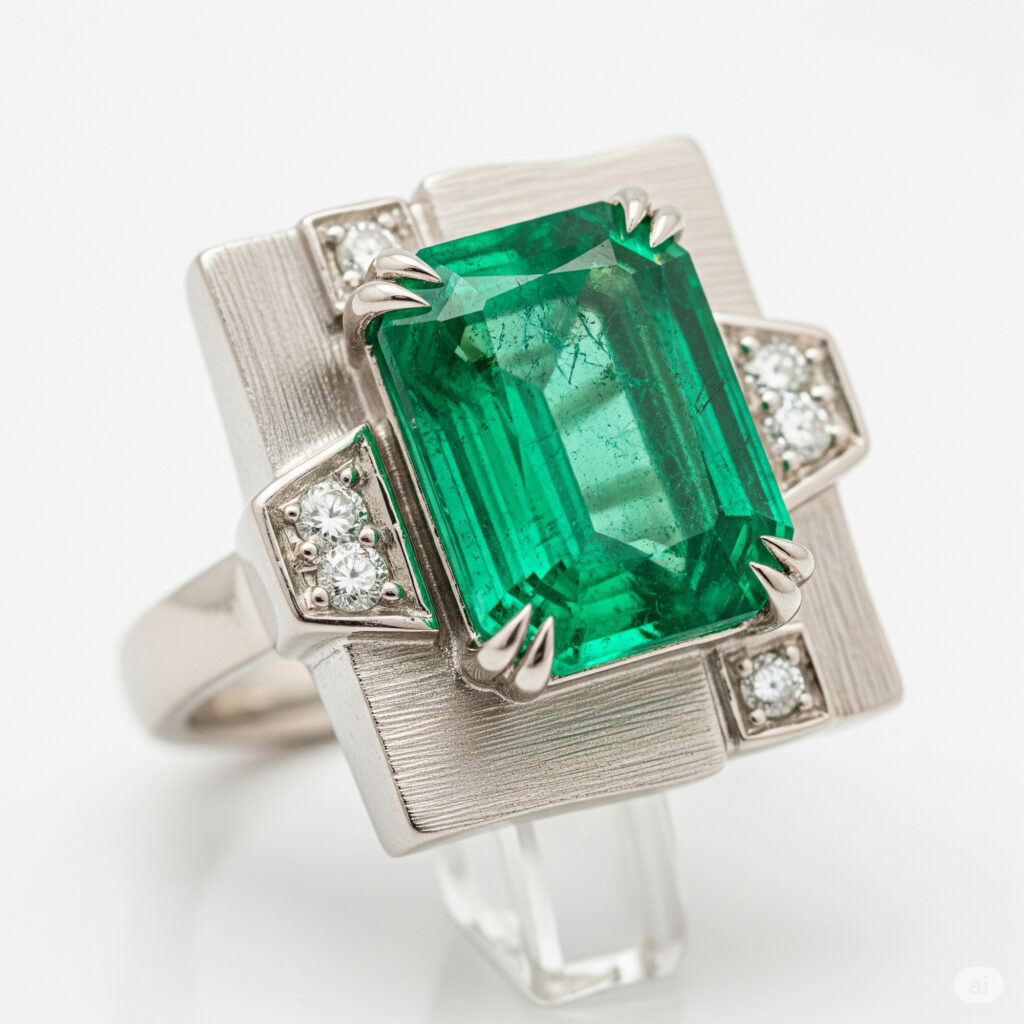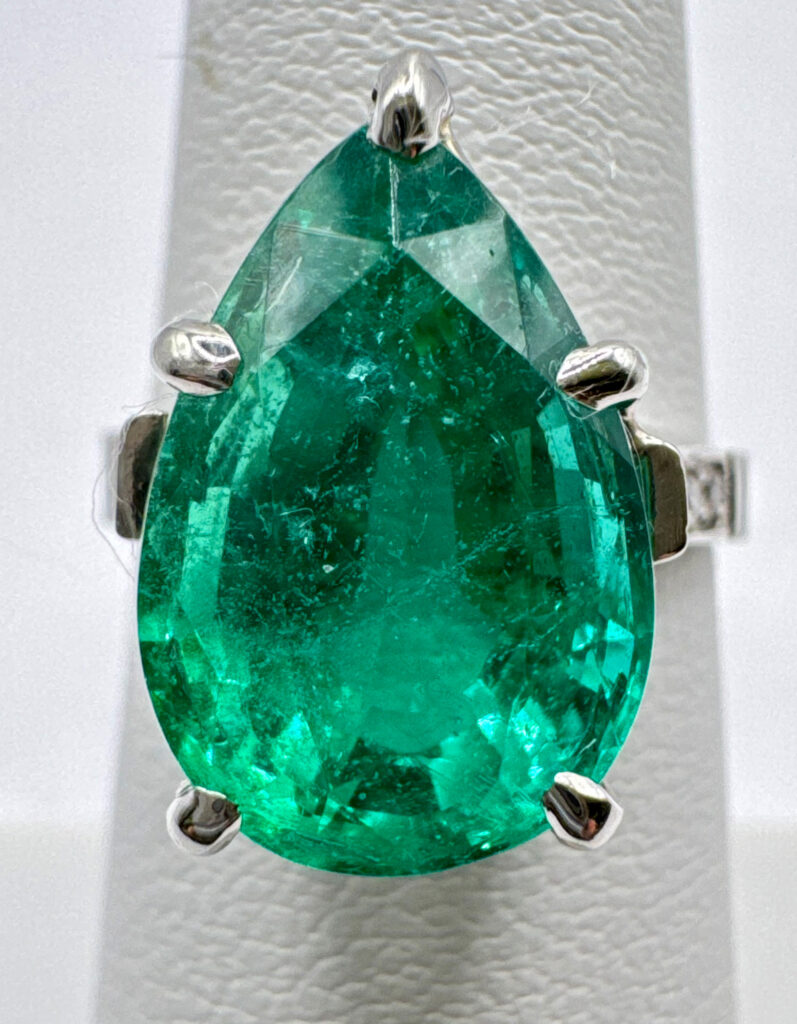Natural emeralds—renowned for their vivid green hues and rarity—rank among the most coveted gemstones in the world. There are four key factors that influence their value: color, clarity, treatment, and origin. Colombia and Zambia lead the global market in both historical prestige and current production, and prices for high-quality emeralds have risen sharply in recent years.

Color & Clarity of Emeralds
Color is the most important grading criterion. Top-quality emeralds exhibit a pure green to slightly bluish-green hue, with medium to dark tone and strong saturation. A tone around 75% is ideal. Stones with greyish or overly dark hues are considered less desirable.
Clarity in emeralds is judged differently from diamonds. Most emeralds contain inclusions, known as jardin (French for “garden”). These are accepted as part of the stone’s identity. Eye-clean emeralds—those with no visible inclusions—are exceptionally rare and command a significant premium.
Treatments are common. Nearly all emeralds on the market are treated with oil or resin to minimize the visibility of the fissures and improve appearance. Untreated, vivid-green, eye-clean stones are extremely scarce and can sell for six figures per carat.
Colombia vs. Zambia: The Emerald Giants
Colombia
- Colombia accounts for 50–90% of global emerald output, depending on the source and year.
- Major mining regions include Boyacá and Cundinamarca, with key sites at Muzo, Chivor, Coscuex, La Pita, and Las Pavas.
- Colombian emeralds are famous for their rich, grass-green to slightly yellowish-green hues with intense saturation and high transparency.
- Though once marred by violence (“green wars”), the industry has modernized, with improved safety and regulation.
- Environmental and social challenges remain, but efforts toward sustainable mining practices are underway.
Zambia
- Zambia ranks second globally, producing about 20–30% of the world’s emeralds.
- The Kagem mine near Kitwe is the world’s largest emerald mine; other active sites include Grizzly’s Lufwanyama mine.
- Zambian emeralds are older (formed ~500 million years ago) and often display a bluish-green hue due to higher iron content.
- They generally lack vanadium, contributing to their fresher, cleaner color and superior clarity.

Market Trends & Pricing of Emeralds
- Demand has surged since mid-2024, especially for high-clarity, richly colored stones.
- Gemfields’ restart of open-pit mining at Kagem signals market optimism; their total revenue from Kagem (2009–2023) reached $1.1 billion.
- In 2023, Zambian emeralds fetched up to $4,000 per carat for lightly treated, high-clarity stones.
- Colombian emeralds remain more expensive due to brand cachet, scarcer supply, and historical appeal.
Treatment & Certification
- Oil or resin enhancement is an industry norm; reputable labs such as GIA, AGL, or GRS provide certification disclosing treatment and origin.
- Ethical sourcing is increasingly important: Zambia (particularly through Gemfields) promotes transparency and local development. Colombia has also improved formal mining and community engagement.
Pricing Summary
| Category | Price Range (per ct) | Key Drivers |
| Eye-clean, vivid Zambian | $3,000–6,000 | Excellent clarity, cooler tone |
| Comparable Colombian | $5,000–10,000 | Purity of color, historic prestige |
| High-end Colombian (untreated) | $10,000+ | Exceptional rarity, Muzo or Chivor origin |
- Prices have grown steadily (estimated 5–15% annually).
- Zambia’s new 2025 export duty may affect auction dynamics.
- Sustainability is growing influence: Zambian emeralds attract ethically minded buyers; Colombian stones continue to appeal to those seeking old-world allure.

Final Thoughts on the Natural Emeralds
Both Colombian and Zambian emeralds offer exceptional beauty, but they serve different market preferences:
- Choose Colombian for traditional prestige, intense grass-green hues, and collector-grade rarity.
- Choose Zambian for vibrant bluish tones; superior clarity, and ethically responsible sourcing.
Buying Tips:
- Insist on third-party certification.
- Verify treatment disclosures.
- Evaluate both color and clarity alongside origin.
- Expect continued price appreciation as global demand rises.
As the emerald market flourishes, knowledgeable buyers who understand the nuances of origin, enhancement, and grading are well-positioned to invest wisely—enjoying both aesthetic pleasure and long-term value.
If you have an emerald that you’d like appraised, reach out to Kelly Knoll to set up your appraisal.